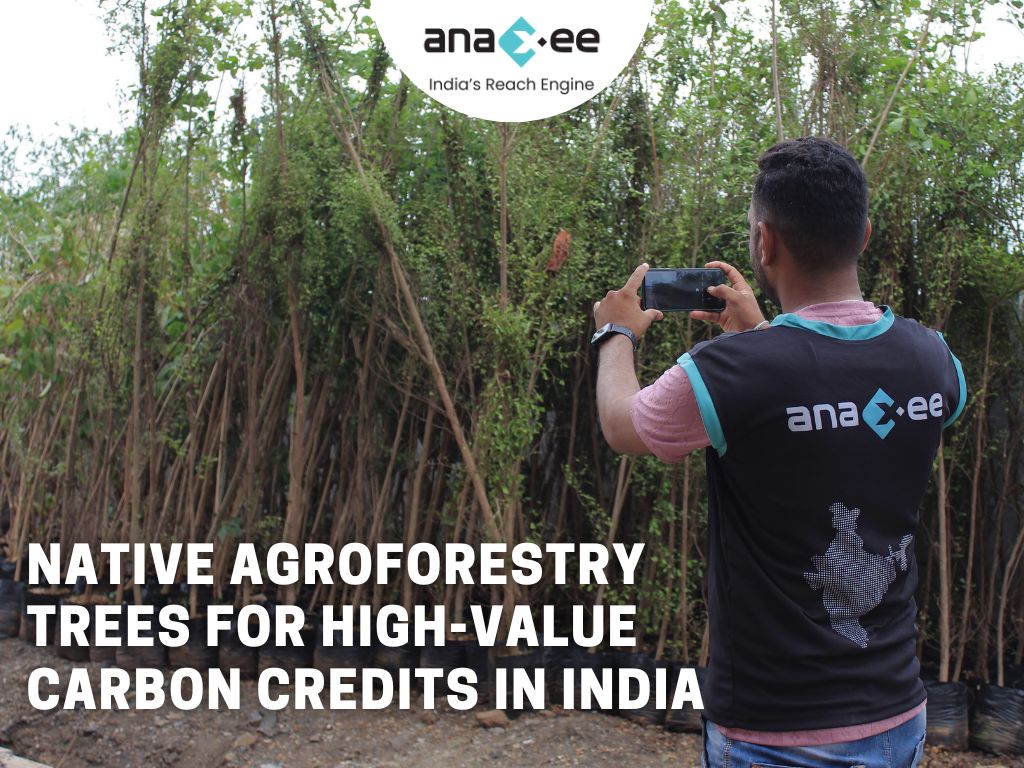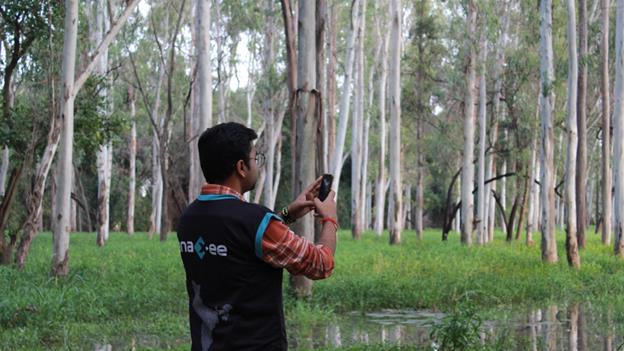BLOG

Native Agroforestry Trees for High-Value Carbon Credits in India – 2025 Guide
Native Trees with Maximum Climate & Biodiversity Pay-off
India’s new agroforestry wave is no longer about exotic fast-growers alone. 2025 buyers want high-integrity, native plantings that store carbon fast and rebuild local ecosystems. Field trials show that shifting from conventional cropland to tree-crop systems raises on-farm carbon stocks by about 25 % within a decade.

Why “native + high-carbon” matters
– Carbon revenue – Buyers pay a premium for credits backed by robust, long-term biomass data.
– Biodiversity – Native host plants bring pollinators, pest predators and under-storey herbs back, improving yield stability.
– Regulatory head-room – India’s forthcoming Carbon Credit Trading Scheme rewards “Nature-based Solutions” over pure timber blocks.
Region-wise Species Short-list & Planting Window
| Region / Representative States | High-value Native Species | Carbon Potential* | Biodiversity / Livelihood Co-benefits | Ideal Field Planting Window |
| North (Punjab, Haryana, UP) | Dalbergia sissoo (Shisham), Azadirachta indica | Up to 0.45 t CO₂ eq tree⁻¹ (ui.adsabs.harvard.edu)
|
Nitrogen fixer; fodder leaves | Nursery Feb-Mar → out-plant just after first monsoon showers (Jun-Jul) (forestrynotes.in, winrock.org)
|
| Western Arid (Rajasthan, Gujarat) | Prosopis cineraria (Khejri), Neem | Thrives on 250-500 mm rain, deep-root carbon sink (winrock.org, sahapedia.org)
|
Shade for pulses; improves soil N | Seedlings 2-3 months old, transplanted at onset of rains (Jul-Aug) (winrock.org)
|
| Central & East (MP, Chhattisgarh, Bihar, Odisha) | Shorea robusta (Sal), Terminalia arjuna, Dalbergia latifolia | Sal-based systems lift soil C by 23-35 % over cropland (apps.worldagroforestry.org, mdpi.com)
|
Leaf-litter mulch; wild silk host (T. arjuna) | Seed sowing early summer; container seedlings planted once monsoon stabilises (Jun-Jul) (en.vikaspedia.in, forestrynotes.in)
|
| South (TN, KA, AP, TS, Kerala) | Melia dubia, Tectona grandis (Teak), Pongamia pinnata | Melia sequesters ≈ 12 t C ha⁻¹ by year 2 – 3 (chemijournal.com, amritanjaliayurved.in)
|
Pollinator-rich blossoms; bio-diesel pods (Pongamia) | Rainy-season planting (Jun-Jul); Pongamia cuttings Nov-Feb with transplant at first rains (agritech.tnau.ac.in, pfaf.org)
|
| North-East (Assam, Meghalaya etc.) | Gmelina arborea, Michelia champaca | Fast-growing hardwood; > 21 m³ ha⁻¹ yr⁻¹ volume (agriculture.vikaspedia.in)
|
Nectar source for butterflies; NTFP timber | Seedlings 20 – 40 cm tall, planted at first SW monsoon rains (Jun) (forest.kerala.gov.in)
|
*Indicative; actual tonnes depend on spacing, soil and management.
Planting Calendar Hot-spots:
1. Nursery prep ends by March – allows hardening before peak heat.First rains (June) – mass out-planting across most states; root-shock is lowest.
2. Post-monsoon (Sept-Oct) – gap-filling for casualties; suitable for hardy species in high-rain areas.
3. Teak and Melia respond poorly to water-logging, so avoid low-lying pits. Neem and Khejri survive long dry spells, making them ideal boundary trees in semi-arid zones.
Take-aways for Project Developers
– Pick regionally adapted natives first – they survive, store more carbon and pass Verra/BIO PD free-rider tests.
– Sync field work with monsoon to cut irrigation costs by up to 40 %.
– Embed biodiversity metrics (e.g., pollinator counts, fodder yield) in your D-MRV to secure premium buyers.
– Leverage digital runners – Anaxee’s on-ground network can census seedlings, geotag plots and push smartphone surveys, slashing MRV overheads.
Combined, these steps position your agroforestry project for higher-integrity, higher-priced carbon credits- exactly what the 2025 market rewards. To know more connect with sales@anaxee-wp-aug25-wordpress.dock.anaxee.com


